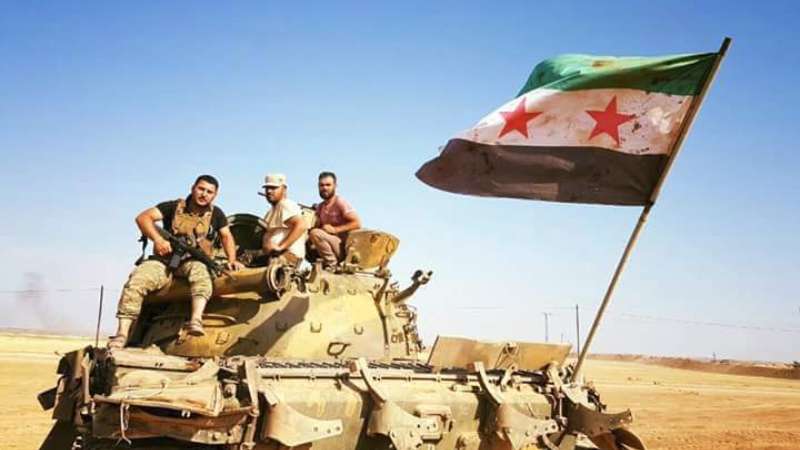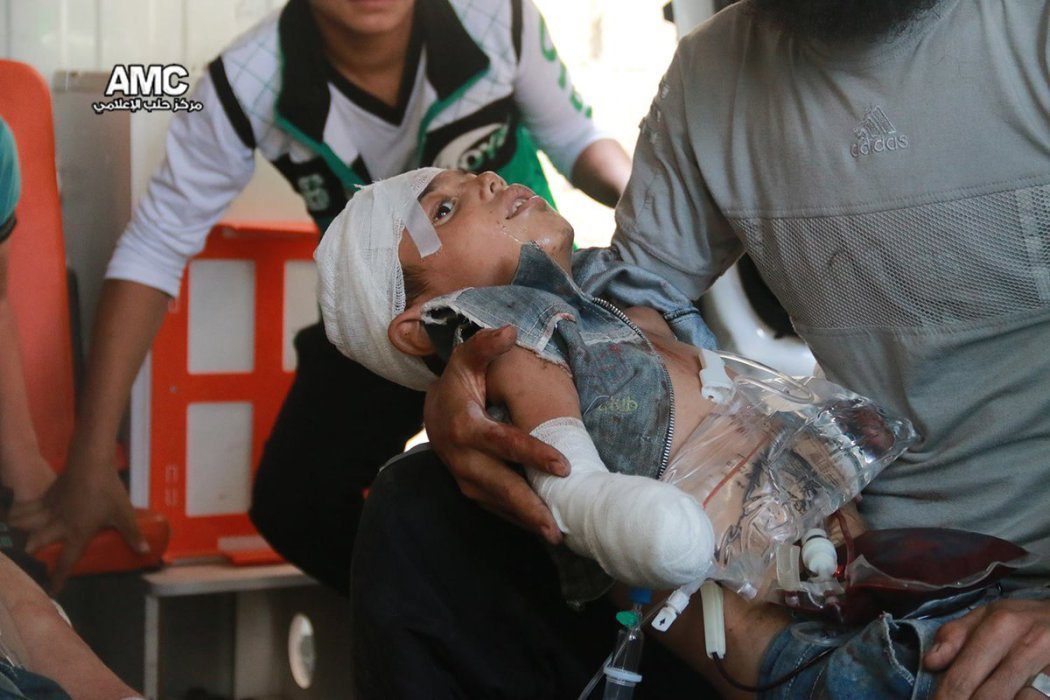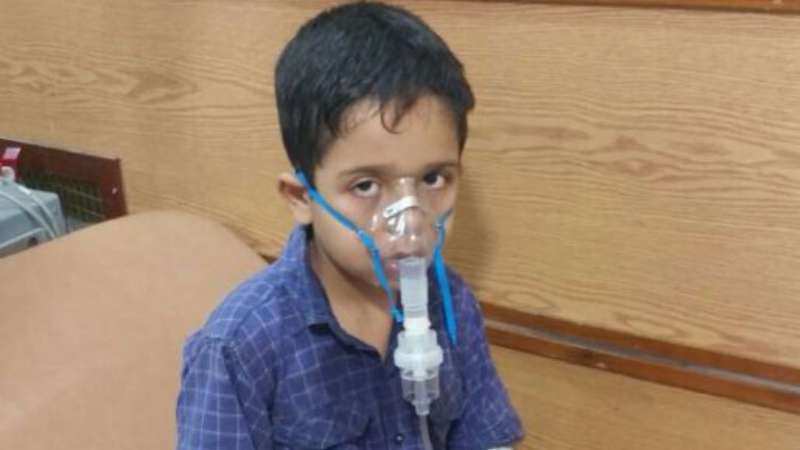
Syria’s Southern Front forces, which face threats from the Islamic State and the government from various directions, have so far managed to hold their ground in the Daraa area despite government offensives and truces that pressure local communities into agreements with the Assad government.
The role of Daraa in the Syrian uprising is now part of Arab Spring lore. In March 2011, a group of schoolboys were arrested, interrogated and tortured by security services after spraying anti-government graffiti on a wall. Soon enough, a national protest movement fanned out from the southern city and engulfed several major Syrian cities.
Nowadays, though, Free Syrian Army (FSA) factions from the Southern Front — once feted as the best hope for a moderate fighting force against Syrian President Bashar al-Assad — increasingly appear on their back foot in Daraa. They have faced competing threats, including the emergence of Islamic State-linked groups near Syria’s southwestern borders with Jordan and the Israeli-occupied Golan Heights. Priorities have also changed within the Military Operations Center (MOC), an Amman-based coordinating body said to include the CIA as well as Jordanian and Gulf intelligence that has backed the Southern Front for the past two years.
Despite relative calm on rebel-government front lines since February’s cessation of hostilities, the Syrian army, supported by Lebanese Hezbollah on the ground and Russian jets in the skies, is now piling pressure on several towns in the Daraa countryside. A large-scale offensive has been expected since the breakdown of the last nationwide cease-fire in mid-September.
Southern Front spokesman Issam al-Rayes argued that despite losing a former military base between Daraa and government-controlled Sheikh Maskin on Sept. 2, rebels have held their ground.
“The regime started an offensive by taking back al-Mahjoura base … aiming to control Dael and Abtaa [because of] their strategic position, to strengthen their areas or territory and strengthen the security of the main highway and main reinforcement road between Damascus and Daraa,” Rayes told Al-Monitor.
This week, an ambush by government forces killed dozens of rebel fighters in the same area as al-Mahjoura, an out-of-use air defense base in the countryside just southeast of Abtaa. According to the UK-based Syrian Observatory for Human Rights monitoring group, 43 fighters were killed when “regime forces were able to besiege them and cut the roads they prepared for [escape].”
But rebels are increasingly eyeing internal threats as well. Because the government has until now failed to actually retake Dael or Abtaa by force, Rayes said, “[They] started to target civilians in these towns to pressure them to submit … [and] were able to recruit some of them as agents.”
That pressure has included truce offers, as well as threatened or actual bombardments. Thousands of civilians have fled Dael and Abtaa since September, according to residents and local activists.
There is a mood of uncertainty — paranoia even. Rebels talk of sleeper cells and spies.
On Oct. 22, FSA rebel factions in Dael announced the arrest of a four-man sleeper cell “working on behalf of the regime in the city.” Pro-opposition outlets reported that the men had been found with radios used to communicate with government forces.
Sheikh Esmat, a Dar al-Adel (House of Justice) official from the Daraa countryside, told Al-Monitor that the men were “guilty of spying for Assad’s forces and … notifying regime forces about the whereabouts of rebel groups.” Rebel fighters had died as a result, he said.
Two of the arrested men died shortly after their arrest when they tried to overpower guards and grab a weapon, the rebel statement said. The remaining two men, Fayez Mahmoud Qatlish and Palestinian national Hussein Ali al-Nasser, were handed over to Dar al-Adel officials in a nearby town.
The statement from rebel factions followed with a threat, promising to “strike with an iron fist all those found to be dealing with the criminal regime, either directly or indirectly.”
And yet there are signs that creeping government offensives and truces offered at gunpoint may be pushing some within local communities toward reconciliation agreements with Damascus.
On Feb. 28, the state-run news agency SANA reported that 1,200 community leaders and civilians attended a reconciliation meeting. Similar meetings have been held in the province since.
The Southern Front’s Rayes argued that truce negotiations are being facilitated by “agents” within opposition-held areas and that they will ultimately spell disaster for the southern rebellion.
“We consider most civilians are against these truces, but those people who are pro-truce are agents of the regime,” he told Al-Monitor. “We don’t differentiate between ourselves and civilians; the civilians are our families. There is no difference in our views.”
A schoolteacher who did not want to reveal his name for security reasons believes that the mood among some civilians has started to change. He told Al-Monitor, “Some groups of civilians and Syrian citizens tried to go to reconcile [with the government], but the FSA’s leaders stopped them. Still, some people — like [state] employees — went and reconciled with the regime in the interests of their wages and to be able to continue working.”
He added, “People are scared of becoming like Ghouta and the evacuation operations that have moved people from one city to another,” referring to the kind of siege, truce and evacuation deals seen recently in Daraya and Moadamiyeh near Damascus, and that have been long expected in eastern Ghouta, also near Damascus.
That’s another reason the schoolteacher said people are leaning toward truces, adding, “Civilians are scared of being displaced away from Daraa.”
The Dael arrests come shortly after a monthslong investigation by the UK-based Syrian Network for Human Rights (SNHR), released Oct. 10, accused a Southern Front rebel faction of forcibly disappearing and torturing to death an army defector who had been negotiating a local truce with government representatives.
Shabab al-Sunna, an FSA faction affiliated with the Southern Front, allegedly tortured to death army defector Zeidan al-Nseirat in March. At the time, Nseirat had been part of a committee in his hometown, Abtaa, tasked with negotiating a truce that would purportedly see an end to bombardments and eased humanitarian access. Nseirat had been selected by local community leaders for the task, according to SNHR.
But Nseirat’s involvement appears to have angered local rebel factions who saw him as anything from a nuisance to a regime spy.
Shabab al-Sunna leader Ahmad al-Oudeh last week called Nseirat an “agent of the regime,” while denyingany role in Nseirat’s death. Oudeh claimed Nseirat had died from a longstanding heart condition.
Recordings leaked by disgruntled Shabab al-Sunna fighters, following an internal “military coup” in August, appear to validate claims that Oudeh personally led the violent interrogation of Nseirat. His voice is audible in the background, in between the sounds of shouts and beatings.
Analysts have been warning for months about the possible disintegration of the Southern Front — not least because southern rebels face threats on two fronts: from IS to the west and the government to the north and east, and more limited support from the MOC in Amman.
But more and more, rebels in the spiritual birthplace of the Syrian uprising may be fighting a new and very active front: one for legitimacy and support among beleaguered, bomb-weary civilians in opposition-held areas.
The article resembles the author’s own views and doesn’t necessarily reflect MEO’s policy



